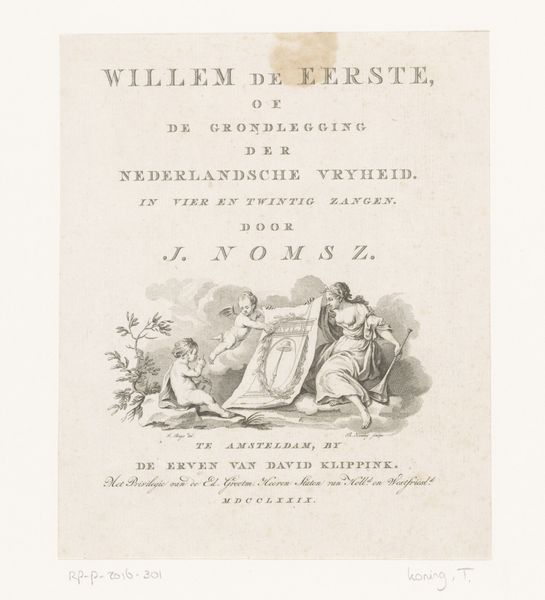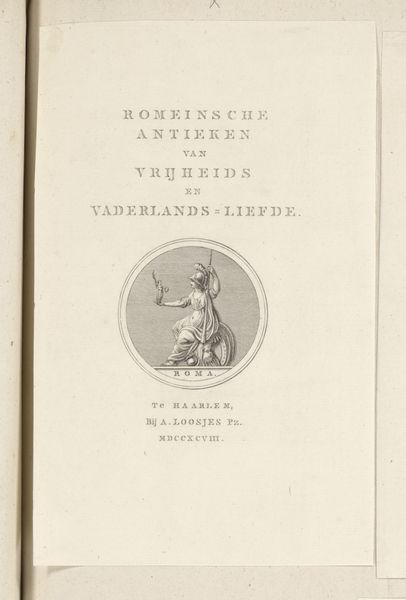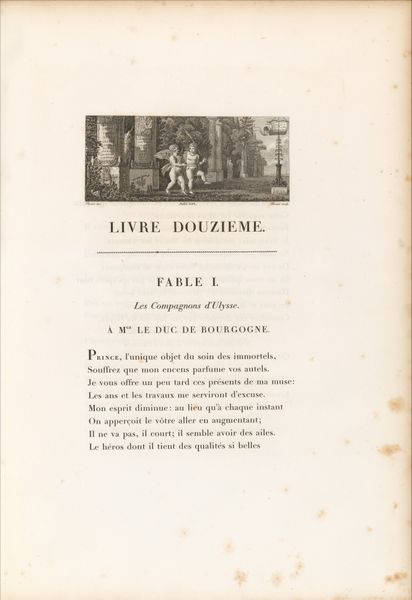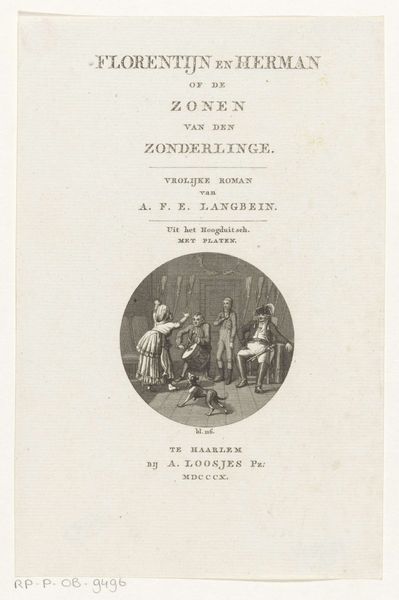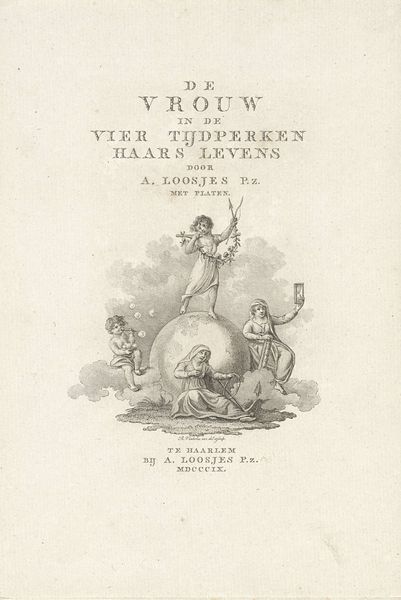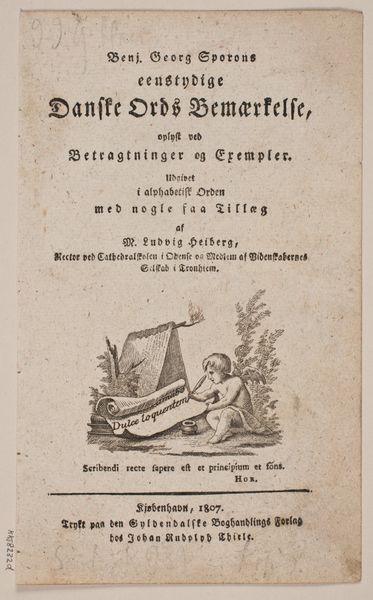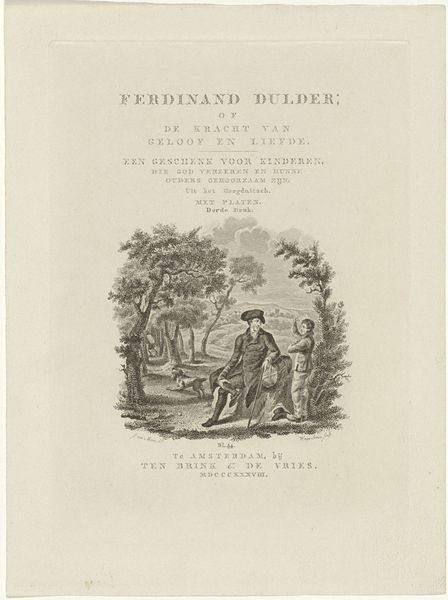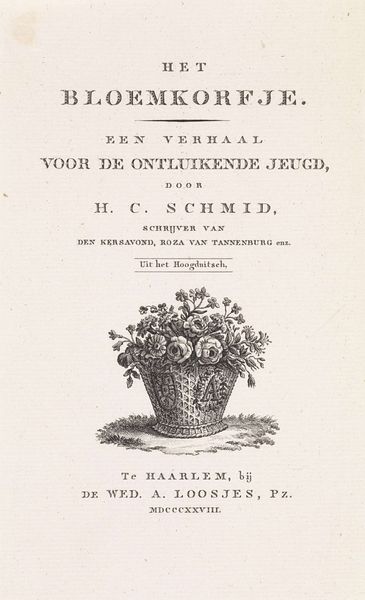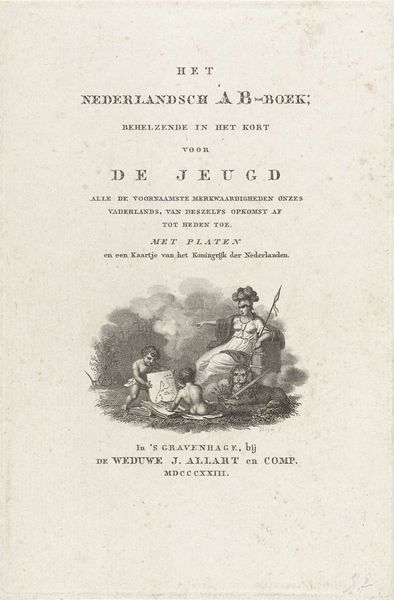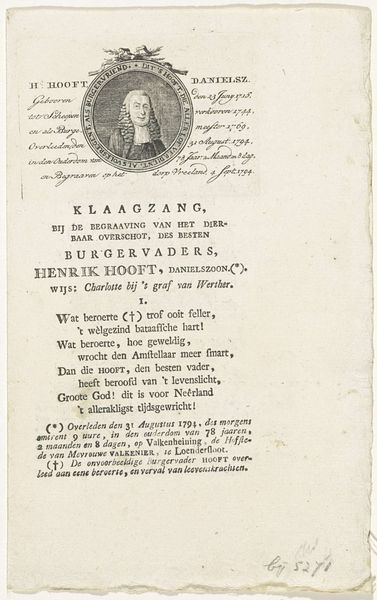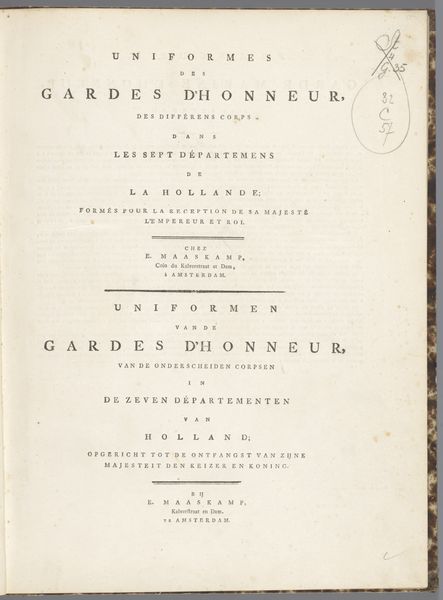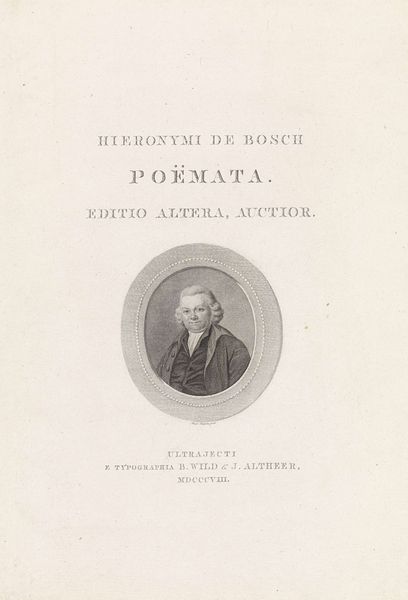
graphic-art, print, typography, engraving
#
portrait
#
graphic-art
#
neoclacissism
# print
#
old engraving style
#
typography
#
engraving
Dimensions: height 236 mm, width 157 mm
Copyright: Rijks Museum: Open Domain
Editor: This is the title page for 'De roemzucht' or 'The Love of Fame' by Eduard Young, engraved in 1793 by Reinier Vinkeles. It has that classic old engraving style. I’m intrigued by the cherubs at the bottom—they almost seem to be enacting some sort of transaction. What's your take on it? Curator: It's a fascinating piece. Let's consider its context. Title pages were crucial for shaping the reception of literary works. In this era, engravings like this often served a didactic function, guiding the viewer, and thus the reader, toward a specific interpretation of the text. Editor: So, these cherubs… they're not just decoration? Curator: Hardly. The positioning of these figures at the base of the title page places them as foundational to understanding Young’s poems. What do you notice about their interactions and the objects surrounding them? Is there a visual hierarchy at play here? Editor: One’s seated regally on what looks like a throne, offering something – a coin maybe? – while the other kneels, holding a rope or a ribbon. Is the kneeling figure enslaved? Curator: It hints at themes within the text itself, perhaps Young's critique of ambition and societal structures. This isn’t simply about pretty images; it’s about reinforcing particular values and social order, through accessible imagery on widely distributed literature. What assumptions do we make when we see "classic" or "old" engraving styles, like those listed in the data about this work? Editor: I see, it’s a visual argument connected to the written one! I hadn't considered how much social commentary could be packed into a title page like this. Thanks for highlighting its deeper cultural relevance. Curator: Absolutely! The true power of art often resides in its ability to shape public perception and participation in larger social conversations.
Comments
No comments
Be the first to comment and join the conversation on the ultimate creative platform.

